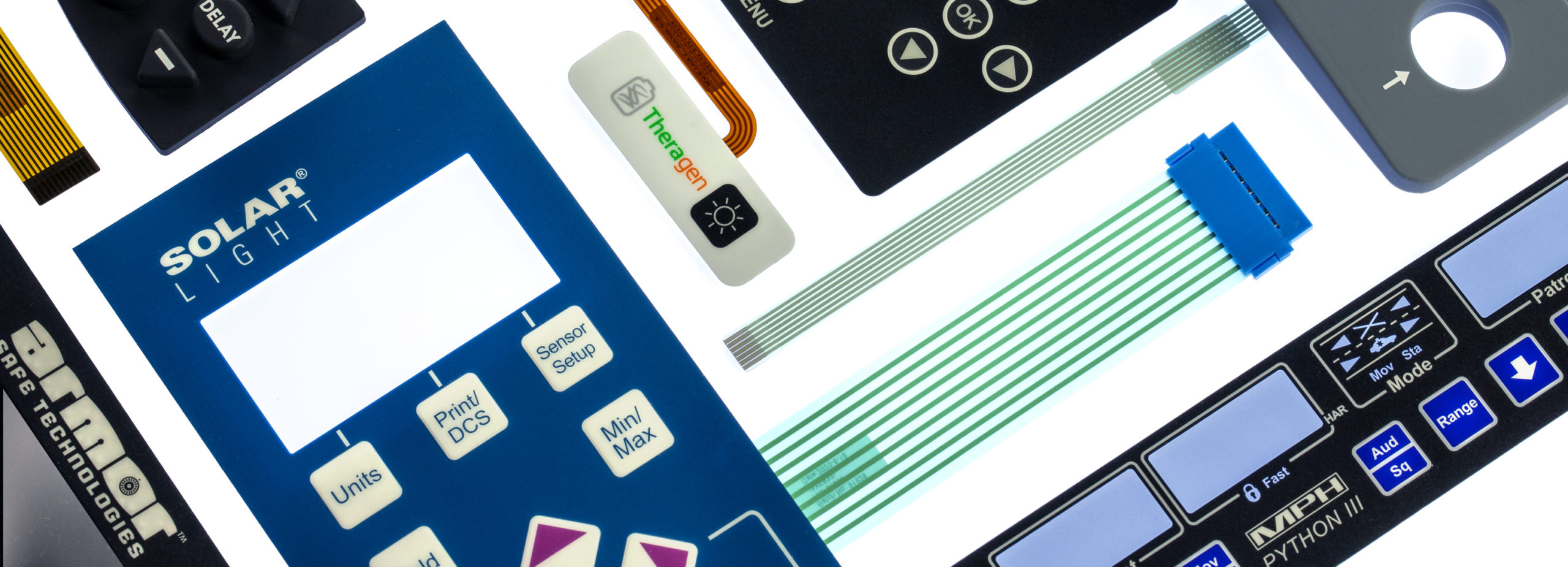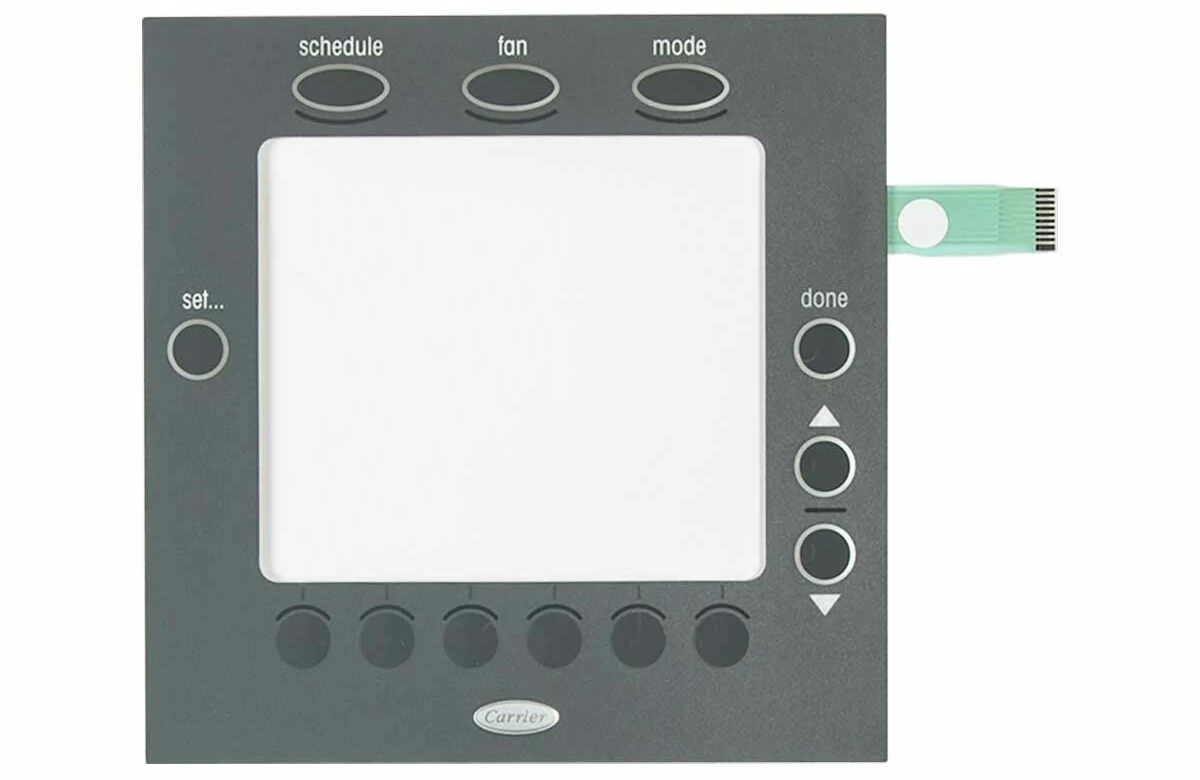Membrane Switches: A Cost-Effective Solution for Product Interfaces
Membrane Switches: A Cost-Effective Solution for Product Interfaces
Blog Article
Understanding the Value of Membrane Switches in Interface
Membrane switches are important components in the design of efficient interface, helping with not only performance yet likewise boosting aesthetic allure and customer communication. Their distinct functions, such as resistance to environmental aspects and adjustable layouts, make them suitable for a diverse variety of applications across numerous sectors. As we discover the various advantages and future fads related to Membrane innovation, it ends up being clear that these buttons are extra than simply components; they stand for a convergence of technology and functionality. The implications of this technology on customer experience deserve examining further.
What Are Membrane Buttons?

The spacer layer, which consists of sticky residential or commercial properties, enables the separation of the circuit layer from the overlay, ensuring that the button remains in a non-activated state until pressed. When stress is related to the overlay, it compresses the spacer layer, connecting the void and completing the circuit in the underlying layer. This design not only minimizes the physical space needed for standard mechanical switches but also enhances the durability of the tool, as Membrane buttons are usually immune to dust, dampness, and various other environmental factors.
Commonly located in applications ranging from customer electronics to clinical gadgets, Membrane buttons are important to modern innovation, supplying a effective and user-friendly interface that lines up with contemporary style needs.
Benefits of Membrane Buttons
While numerous button technologies exist, Membrane Switches deal distinct benefits that make them particularly preferable in various applications. Among the key benefits of Membrane buttons is their portable style, which enables space-saving implementations in gadgets where realty is limited. Their slim profile not only boosts visual appeal however likewise facilitates light-weight building and construction.
Another significant advantage is their resistance to environmental aspects. Membrane switches are commonly secured versus moisture, dust, and impurities, making them perfect for usage popular environments, such as medical gadgets and commercial equipment. This sturdiness expands the life-span of the switch, decreasing upkeep prices and boosting reliability.
Furthermore, Membrane buttons can be tailored to fulfill specific design demands, integrating special graphics and shades that boost user interaction. Their tactile feedback choices can likewise be tailored to supply a gratifying customer experience. In addition, Membrane buttons are cost-efficient, specifically in high-volume applications, as they can be generated successfully.
Applications in Numerous Industries

In the consumer electronic devices sector, Membrane buttons prevail in gadgets such as microwaves, washing equipments, and push-button controls. Their tactile comments and visual choices enhance individual experience while offering a streamlined, modern-day look. Furthermore, automobile producers make use of Membrane switches in control panel controls and infomercial systems, where area is restricted, and individual involvement is important.
Furthermore, the commercial sector leverages Membrane buttons in control panels for equipment and tools, permitting user-friendly procedure in commonly severe environments. Their resistance to chemicals and wetness makes certain durability and integrity in these next page applications. In general, the flexibility of Membrane Switches contributes considerably to their learn this here now widespread usage, making them important in numerous technological domain names.
Layout Considerations for Membrane Switches

When making Membrane buttons, Check Out Your URL several crucial factors to consider need to be taken right into account to ensure optimum functionality and customer experience. The choice of materials is essential; choosing sturdy, high-grade substratums can enhance the button's long life and resistance to ecological factors such as wetness and temperature level variations.
Secondly, the layout of the graphic overlay need to focus on quality and simplicity of use. Icons and text should be readable, and the design ought to help with user-friendly interaction (membrane switches). Furthermore, responsive responses is essential; including a responsive dome or various other devices can improve the individual experience by giving physical verification of activation
Another important factor is the button's electrical performance. Developers need to guarantee that the conductive traces are correctly developed to decrease resistance and avoid signal interference. This involves evaluating the called for actuation pressure and making sure compatibility with the electronic parts they will interface with.

Future Fads in Membrane Modern Technology
As innovation proceeds to development, Membrane switches are positioned to develop significantly, driven by advancements in materials and producing strategies. One arising trend is the consolidation of sophisticated products, such as flexible substratums and conductive inks, which enhance toughness and reduce the general weight of Membrane switches. These materials not just improve the tactile feedback but also allow for the design of switches that can endure harsher environmental conditions.
Additionally, the combination of touch-sensitive modern technologies is transforming typical Membrane Switches into more interactive interface. Capacitive touch sensing units embedded within Membrane button panels can provide a more intuitive and receptive customer experience, aligning with the growing need for sleek, modern designs in consumer electronics.
Additionally, innovations in printing strategies, such as digital and 3D printing, make it possible for quick prototyping and modification of Membrane switches. This flexibility enables producers to respond extra swiftly to market needs and consumer preferences.
Last but not least, sustainability is ending up being a substantial focus, with suppliers discovering environmentally friendly materials and procedures. As these patterns unfold, the future of Membrane modern technology assures enhanced capability, visual allure, and ecological duty, strengthening their role in advanced interface throughout various sectors.
Final Thought
In conclusion, Membrane Switches represent a crucial component in the layout of individual interfaces, integrating capability with aesthetic adaptability. As advancements in technology proceed, the advancement of Membrane switches is expected to further improve user interfaces, driving advancement and boosting use in a progressively intricate technological landscape.
Membrane buttons are integral elements in the style of effective customer interfaces, facilitating not only performance however additionally boosting visual charm and user communication.Membrane Switches offer as a crucial part in different individual interfaces, assisting in a seamless interaction between individuals and electronic devices.While numerous button modern technologies exist, Membrane Switches offer unique advantages that make them particularly preferable in different applications.Additionally, Membrane buttons can be customized to fulfill specific layout demands, including one-of-a-kind graphics and shades that boost customer interaction.In verdict, Membrane Switches represent an important part in the style of individual interfaces, integrating capability with visual flexibility.
Report this page